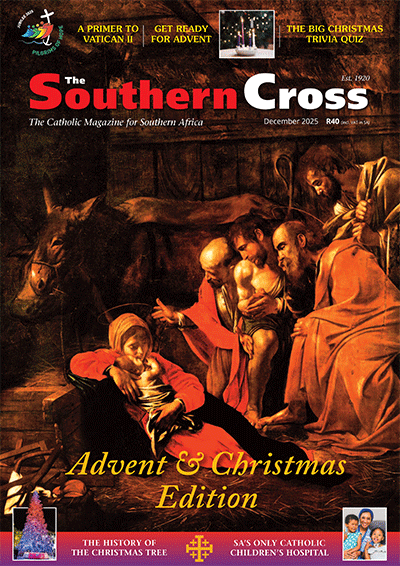9: St Peter’s basilica at its best and worst
As one prepares to visit Rome for the first time, one may expect that the highpoint would be St Peter’s basilica, an architectural marvel packed with priceless artworks, an indigestible amount of Church history, countless altars catering for virtually any entrenched Catholic devotion, and lots of dead popes (including, of course, St Peter patron of our pilgrimage whose bones are said to rest beneath the main altar).
St Peter’s does meet and exceed all such expectation and yet it is somewhat disheartening for religious pilgrims as they jostle with multitudes of other pilgrims and tourists for space. Our group had the good fortune of being admitted into the huge basilica before the tourists were let loose, by dint of having booked an early Mass there. So we had the unfettered run of the place for a short while, a tranquil interval that gave some the opportunity to pray, and others to explore.
One doesn’t really know what to look at first: St Peter’s is an eccelesial wonderland. I did not spot Michelangelo’s Pieta or, more accurately, its replica, since the original was removed after a mad Australian, Laszlo Todt, attacked it with a sledgehammer in 1972, chipping Our Lady’s nose, eyelids and elbow. And the Pieta is located right at the entrance!
St Peter is not the pope’s ecclesiastical seat that would be Rome’s official cathedral, St John Lateran but it is certainly the main venue for papal activities: from their installation to their funeral. As the papacy is at the core of the universal Church, so is St Peter’s the HQ of Catholic unity, where the world’s faithful of diverse backgrounds converge.
So it was perfectly appropriate that our group should join one from Italy in the celebration of the Eucharist. In truth, we gatecrashed their Mass. Our schedulled Mass was inconvenient for reasons of time management, and our Italian brothers and sisters generously invited us to their now bilingual Mass. The celebrant was exceedingly gracious, giving our spiritual director, Fr Emil Blaser OP, the opportunity to read and preach in English. This truly was Catholic union in action.
We had the benefit of exploring the virtually empty basilica (save for the floor-polishing guy in a cart designed for that purpose), and the elation of receiving the Eucharist in one of Christianity’s holiest shrines. Now we had to return to reality and join the throngs of fellow visitors. From here on in we were not so much pilgrims as sightseeing tourists.
The tour guides now use a microphone to instruct their headphone-wearing charges (yours truly evidently hears something amusing in the photo on the right). This makes obvious sense. As a first-time visitor, I imagine the previous regime as being akin to a market-place at the foot of Babels tower, with tour guides desperately trying to make themselves heard. Even with the tour guides reduced to whispering, the cacophony was relentless, notwithstanding the touchingly optimistic admonition over the PA system: This is a place of prayer and devotion. Please be quiet.
Our whispering guide at St Peter’s was not the group’s regular companion, the charming and knowledgable Laura Bollati, but one accredited by the basilica’s administration. This means that he guides exclusively at St Peter’s. This is unheard of in the Holy Land, but seems to be common throughout Italy. We enjoyed the amiable expertise of Emanuele, whose manner of speech delightfully conformed to every stereotype in the canon of Italian accents
The crush at the popular attractions such as the Piet, the main altar, the pallid wax-injected corpse of Pope John XXIII in its glass casket may well induce claustrophobia among those thus inclined. With the constant din and the masses of people not all of whom understood the basilica as a place of worship St Peter’s evoked the air of a theme park.
The queues in the crypt, where many of the 91 popes interred in the basilica rest, moved fairly swiftly, helped along by industrious ushers who countenance neither time-wasting frivolity nor prayer in front of Pope John Paul II’s plain tomb.
Personally, I was delighted with what I had been privileged to see and very pleased to leave St Peter’s basilica.
After a leisurely lunch and gelato in the nearby Via delle Fornaci, we prepared to visit the remaining two of Rome’s four major basilicas.
The magnificent archbasilica of St John Lateran (or the basilica di San Giovanni in Laterano) is the principal of the four basilicas. Its opulent interior testifies to this. The basilica was built in the early 4th century on the property once owned by the Roman Laterani clan. This explains part of the name. The patronage refers to two St Johns: Baptist and Evangelist (the chief patron, as per the basilica’s official title, is in fact Christ the Saviour). An earthquake, a couple of fires as well as the ravages and fashions of time required some restructuring.
Unlike St Peter’s, the rebuilding of which began only 500 years ago, and St John Lateran, the basilica of St Mary Major (or basilica di Santa Maria Maggiore) has retained its basic structure since it was completed in 440 on the site of a reputed Marian apparition (and previously grounds of a pagan temple).
At the time of our visit a liturgical event was taking place, limiting our scope in appreciating the basilica’s lavish interior. So after a quick tour and admiring the ceiling gilded with Inca gold reportedly donated by Christopher Columbus sponsors Ferdinand and Isabella of Spain to their compatriot, the objectionable Pope Alexander VI, we closed the day’s programme feeling thoroughly churched-out.
- Cardinal, Music, Rugby… - November 14, 2025
- Cardinal Brislin on a Year of Surprises - October 31, 2025
- The Church’s 1955 fight to save Catholic schools - October 30, 2025




